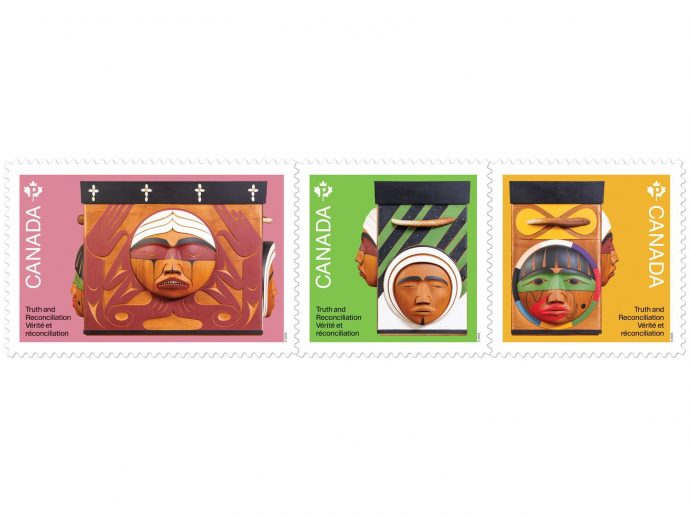Categories more
- Adventures (17)
- Arts / Collectables (15)
- Automotive (37)
- Aviation (11)
- Bath, Body, & Health (77)
- Children (6)
- Cigars / Spirits (32)
- Cuisine (16)
- Design/Architecture (22)
- Electronics (13)
- Entertainment (4)
- Event Planning (5)
- Fashion (46)
- Finance (9)
- Gifts / Misc (6)
- Home Decor (45)
- Jewelry (41)
- Pets (3)
- Philanthropy (1)
- Real Estate (16)
- Services (23)
- Sports / Golf (14)
- Vacation / Travel (60)
- Watches / Pens (15)
- Wines / Vines (24)
- Yachting / Boating (17)
Published
10/25/2025 by Canada PostIn commemoration of the National Day for Truth and Reconciliation, Canada Post today released new stamps featuring the Bentwood Box as a tribute to Survivors and a symbol of healing, reconciliation and hope.
The stamps present the Bentwood Box created by Coast Salish artist Luke Marston for the Truth and Reconciliation Commission (TRC) of Canada in 2009. The box travelled with the TRC to its eight national events throughout Canada. People placed personal and often sacred items in it to symbolize their spiritual journey toward healing and as gestures of truth and reconciliation. Photographs, reports, books, drums, knitted baby blankets and beaded regalia were among the thousands of items put in the box.
Bentwood box traditional uses
Bentwood boxes are traditional to Canada's Northwest Coast. Indigenous communities used them as storage boxes for food, medicine or ceremonial regalia, water buckets, burial boxes, canoe tackle boxes and drum boxes. The boxes were also used to steam or cook food by filling them with water and adding hot stones from a fire.
Master carver Luke Marston
Coast Salish artist Luke Marston – a master carver from the Stz'uminus First Nation on Vancouver Island – steamed, bent and carved the box in the traditional style from a single piece of sacred old-growth red cedar. Marston is from a family of carvers and his art is deeply influenced by the stories, traditions and natural environment of his Coast Salish heritage.
Partnership with the Survivors Circle
Canada Post continued its partnership with the Survivors Circle of the National Centre for Truth and Reconciliation (NCTR) to create this fourth issue of its Truth and Reconciliation stamp series. Canada Post thanks the Survivors Circle for their guidance and for choosing the Bentwood Box for the series. The partnership helps ensure that the perspectives and voices of Survivors remain central to the stamp creation process.















